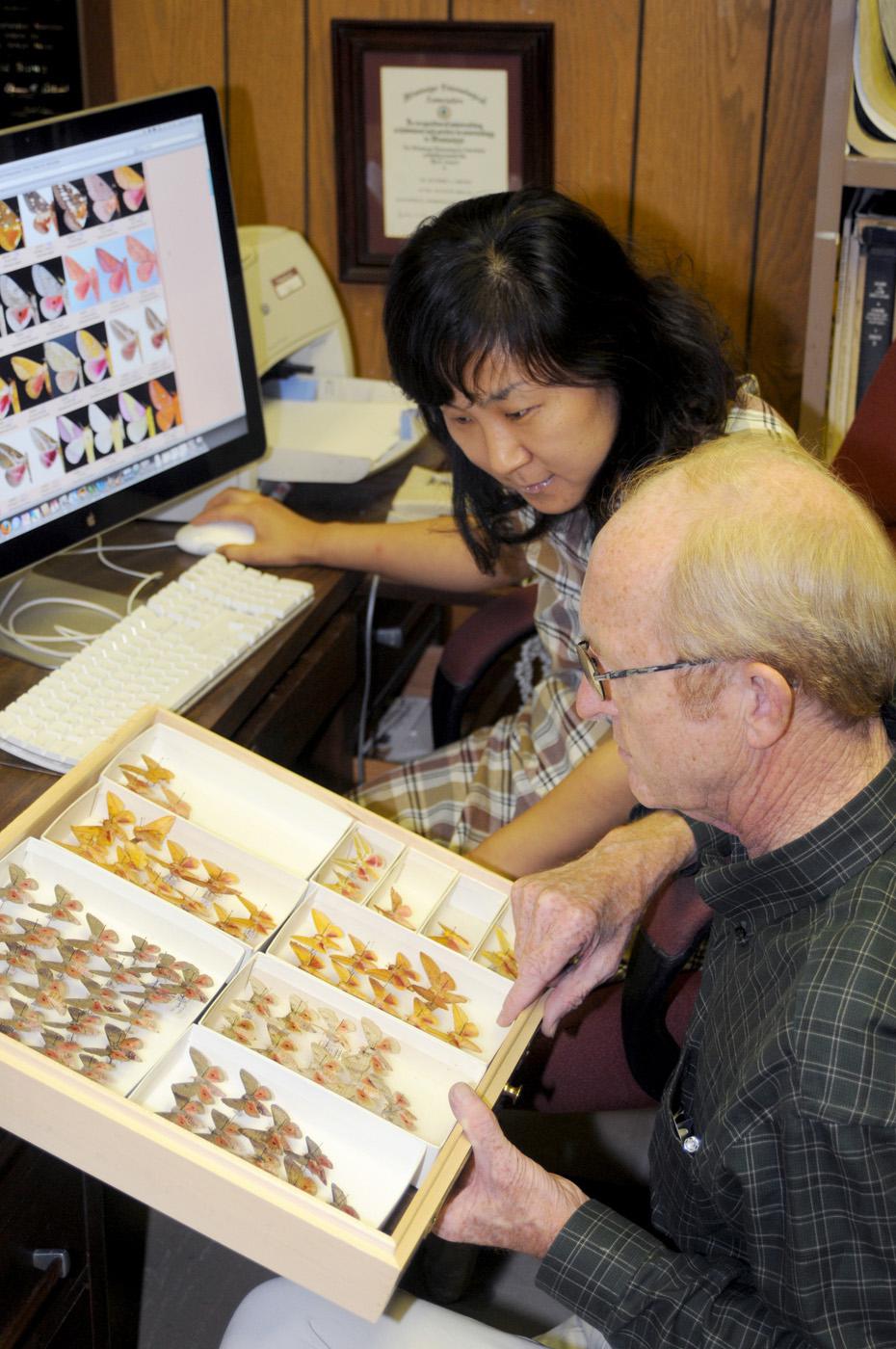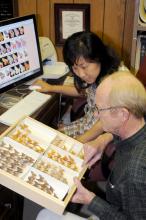Information Possibly Outdated
The information presented on this page was originally released on June 10, 2010. It may not be outdated, but please search our site for more current information. If you plan to quote or reference this information in a publication, please check with the Extension specialist or author before proceeding.
MSU entomology museum identifies invasive species
By Karen Templeton
MSU Ag Communications
MISSISSIPPI STATE -- The Mississippi Entomological Museum is poised to identify destructive invaders -- taking the form of seemingly harmless bugs -- sneaking into the country and threatening significant damage to U.S. agriculture.
Exotic insect species enter the United States through multiple routes such as on wood shipping pallets, plant materials, and imported fruits and vegetables. The U.S. government sets trade restrictions to help prevent the introduction of non-native pests and its inspectors work at all borders to search for and confiscate materials carrying these insects.
Some hidden pests do make it past inspection and move into U.S. agricultural crops. Once established, these pests can damage crops and native plant species, and ultimately cause severe economic damage.
For example, one such pest is the Asian longhorned beetle. According to the U.S. Department of Agriculture, the beetle hitchhiked into the country inside wood crates and pallets carrying imported goods from Asian countries. Now established in the United States, it has killed thousands of trees in New York, Massachusetts and New Jersey and is costing millions of dollars to eradicate.
Richard Brown, director of the Mississippi Entomological Museum and a professor in Mississippi State University’s entomology and plant pathology dpeartment, said damage by invasive species is a serious threat to entire ecosystems.
“Currently, the U.S. is dealing with the introduction of the cactus moth, a species native to Argentina. It is thought to have entered the country through commerce to Florida,” he said. “It has spread to South Carolina and some Louisiana parishes.”
Brown said the caterpillars of this moth can destroy entire cactus plants. If it enters Texas, the abundance of cactus could make it almost unstoppable.
“Once in Texas, it can easily move to Mexico,” Brown said. “Many people in that country are dependent on cactus plants as food for their livestock, and the plants’ destruction could severely affect Mexico’s economy as well as the desert ecosystem.”
Brown said quick identification of cactus moths and other invasive species is crucial to stopping their spread. It is impossible to detect every invasive species at the border, so other identification centers are necessary. The museum on the MSU campus serves as one of those centers.
Last year, the USDA’s Animal and Plant Health Inspection Service, or APHIS, designated the museum as an Eastern Region Identification Center. The museum offers identification services with funding through the Farm Bill. APHIS’s Cooperative Agricultural Pest Survey program publishes an extensive list of target pests for which surveys are conducted, and many of the suspect insects found in the eastern United States are sent to MSU for identification.
Brown was a national identifier in the APHIS’s cactus moth program and has had a long working relationship with Joel Floyd, the agency’s domestic diagnostics coordinator. When it came time to designate a center in the eastern United States, Floyd immediately thought of Brown and his staff. The choice was made based on their experience and because Brown was already identifying insects from surveys in neighboring states.
“The museum was just a natural choice to designate as an identification center,” Floyd said. “Dr. Brown has a vast knowledge of moth species and employs a cadre of experienced insect taxonomists. His team is always willing to take on a large number of samples, and because of their interest in the distribution of native insect species, they continue to ask for more.”
APHIS also has agreements for pest identification with the Carnegie Natural History Museum, the Washington State Department of Agriculture and the Oregon Department of Agriculture. Brown and his team are enthusiastic about being a part of this group.
“So far, we have worked with 900 sample sets from all over the eastern United States, which included more than 40,000 beetles,” Brown said. “We have a system in place to accurately identify the different species of insects and then report our findings.”
In addition to helping the U.S. government identify troublesome pests, the museum also manages the largest collection of moth images in the world.
“We manage the North American Moth Photographers Group website,” Brown said. “Not only are we doing identification work on these moths, but we also prepare the images and upload them to the site.”
SangMi Lee, an MSU entomology and plant pathology researcher, is the only person in the country who specializes in identification of species of Gelechiidae moths. Researchers around the country seek out her expertise in identifying these moths. Lee and her colleagues prepare images of moths and post them on the website.
Others working to identify these creatures can compare their samples with the posted images. The website gets millions of hits a year.
“Some of these moths, such as the tomato pinworm and pink bollworm, pose a significant threat to agriculture, so accurate identification is necessary,” Lee said. “We get inquiries from all around the world.”
Pest identifiers worldwide and the U.S. government use the website as a resource.
“USDA port inspectors can go to this site for help in identifying possible imported threats,” Brown said. “We are also available to answer questions they have about the images we have on the site and to provide additional identification assistance.”
Brown looks forward to a continued relationship with federal inspectors and other identifiers.
“We have a unique staff with knowledge in many areas, and we are fortunate to get to share our expertise with such a large part of the country,” he said.
For more information on the museum and moth identification, visit http://mississippientomologicalmuseum.org.msstate.edu and http://mothphotographersgroup.msstate.edu.


